Research Projects
The projects below have been done in collaboration with many scientists that I've been fortunate to work with, learn and share ideas. A complete list of collaborators can be found in Google ScholarOverview: Oceanic crust and most of volcanism on Earth are produced at mid-ocean ridges, an underwater mountain chain where two tectonic plates separate. Basic theories suggest that hot material within the Earth's interior rises passively, melts and then cools down to create oceanic crust. However, past decade geophysical surveys revealed that magma has a more dynamic character and its journey from the mantle to the surface is intrinsically more complex than previously thought. We model the interaction between melt and the solid rock to address questions related to generation, transport and extrusion/emplacement of melt in the lithosphere.
Melt extraction in the Turkana Depression
Turkana Depression shows widespread diffuse faulting and volcanism, in contrast to the narrow rift architecture in the Ethiopian Plateau. It also experienced two episodes of rifting prior to flood-basalt magmatism, likely thinning and weakening the lithosphere. Here, we propose that lithospheric strength (rheology) has a strong control on melt extraction and this can explain the anomalous rift architecture in the Turkana Depression, East African Rift. This work represents one of the first physically-consistent rift model with magma transport.
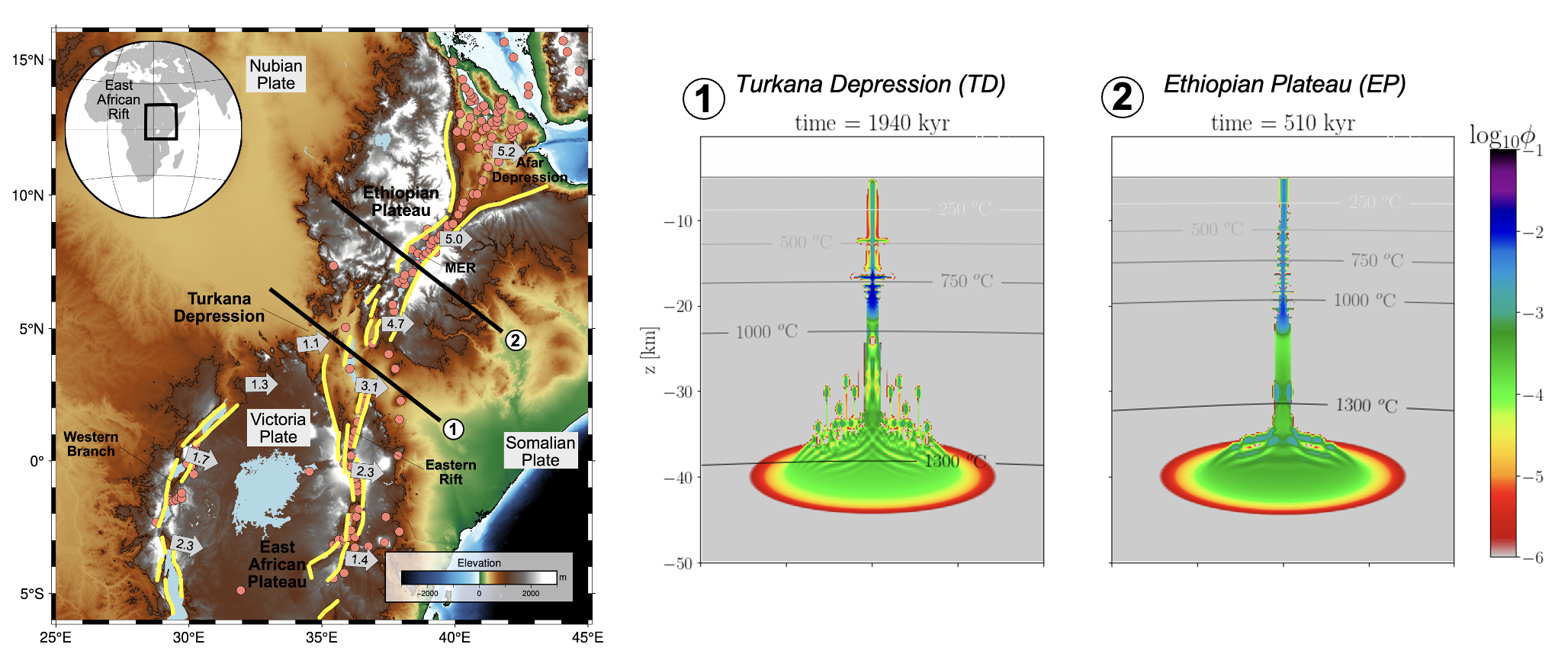
RS URF Project: Making the Ocean Floor
The project aims to understand the interaction between magmatism and tectonics in oceanic settings. Motivated by the most recent observations from the ocean floor, we plan to develop physics-based models that capture the details of magma generation in the mantle and how it travels to the surface to create and shape the seafloor. (2024-2031)
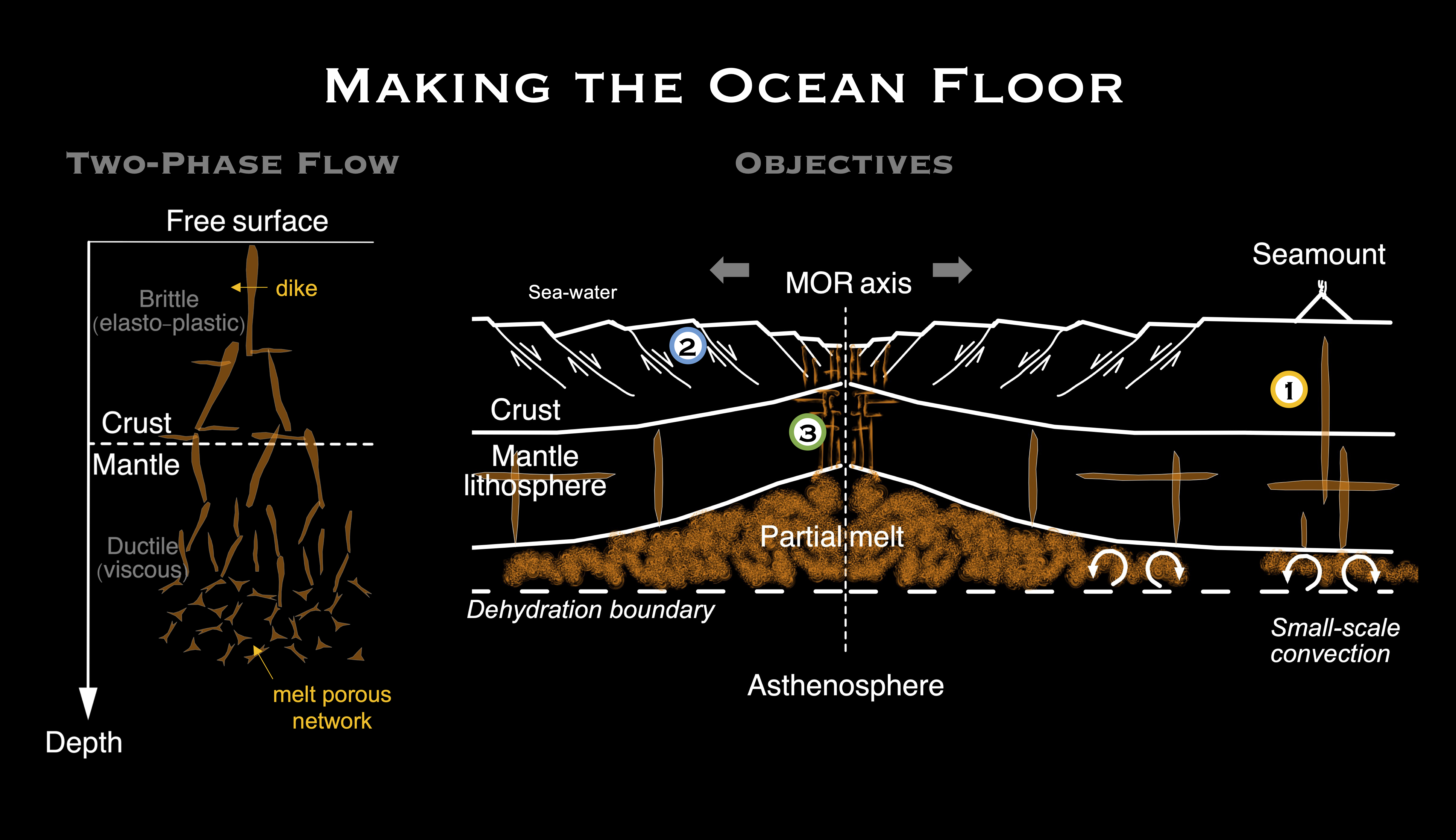
Convective flow at the LAB
A classic problem in geophysics, what is the nature of the lithosphere-asthenosphere boundary (LAB)? The LAB is the boundary between tectonic plates and the convecting mantle below, but also marks a transition between heat transport by conduction in the lithosphere and by convection in the asthenosphere. Multiple geophysical observations suggest a weaker and shallower LAB. Small melt fractions enriched in volatiles (water, carbon dioxide) may explain these geophysical observations and the geochemistry of intraplate volcanoes. Right: two-phase flow models show how volatile-assisted melting impacts convective flow in the asthenosphere.
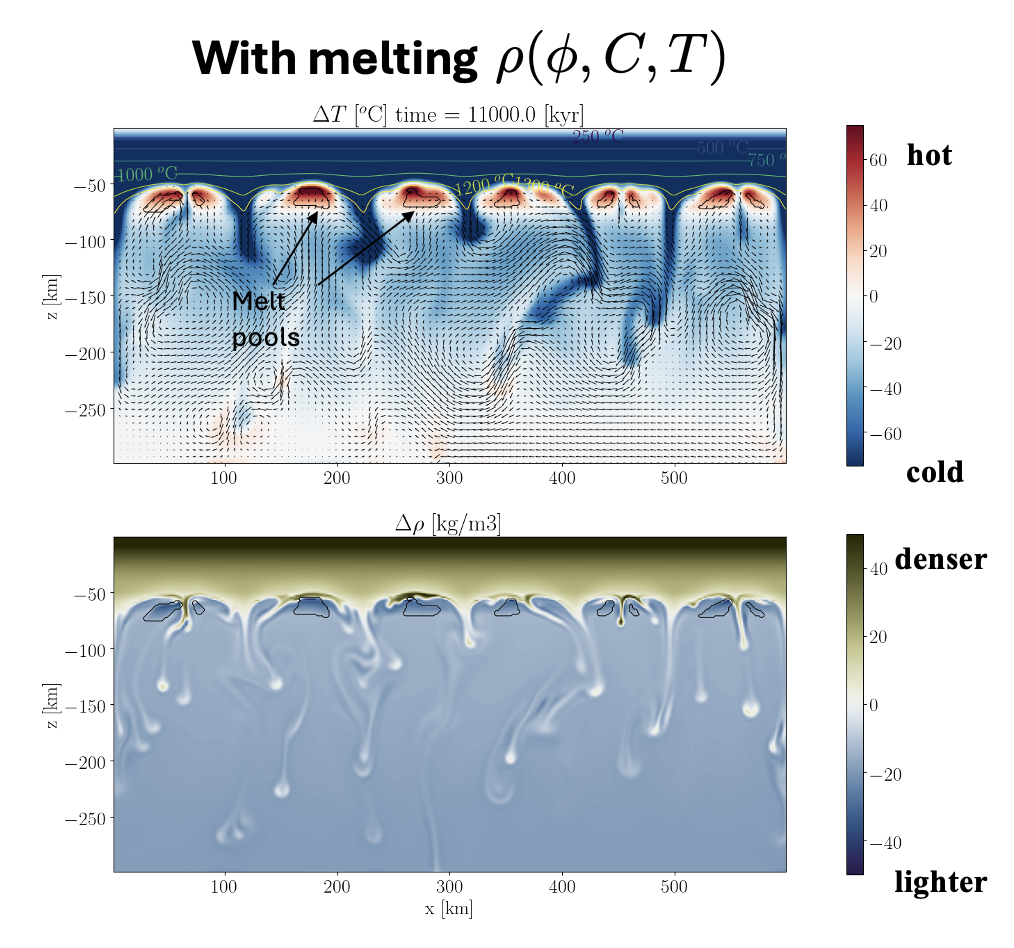
Buoyancy-driven flow at mid-ocean ridges
Mid-ocean ridge model to investigate buoyancy-driven flow due to porosity, composition, and temperature. Right: simulation showing development of asymmetry beneath ridge axis and small-scale convection at the lithosphere-asthenosphere boundary. Top panel represents melt fraction (porosity); bottom panel represents bulk density relative to reference solid mantle.
RIFT-O-MAT Project: Magma dynamics at mid-ocean ridges and rifts
How does magmatism promote and shape rifts in continental and oceanic lithosphere? In this project (PI Richard Katz, U. Oxford), we focused on magma generation and transport at spreading ridges, but also on deformation of the host rock to investigate processes such as diking and faulting. We also developed numerical tools (FD-PDE framework) that are suitable for magma dynamics theory with visco-elasto-plastic rheology. (2019-2024)
Guide to 101 Geodynamics
During the COVID pandemic, we (the authors) transformed a short EGU course into this collaborative perspectives paper on methods, practices, and philosophy of geodynamic modelling. The paper aims to be an introduction to geodynamic modelling for students and non-geodynamicists, but also invites feedback from a more expert audience.
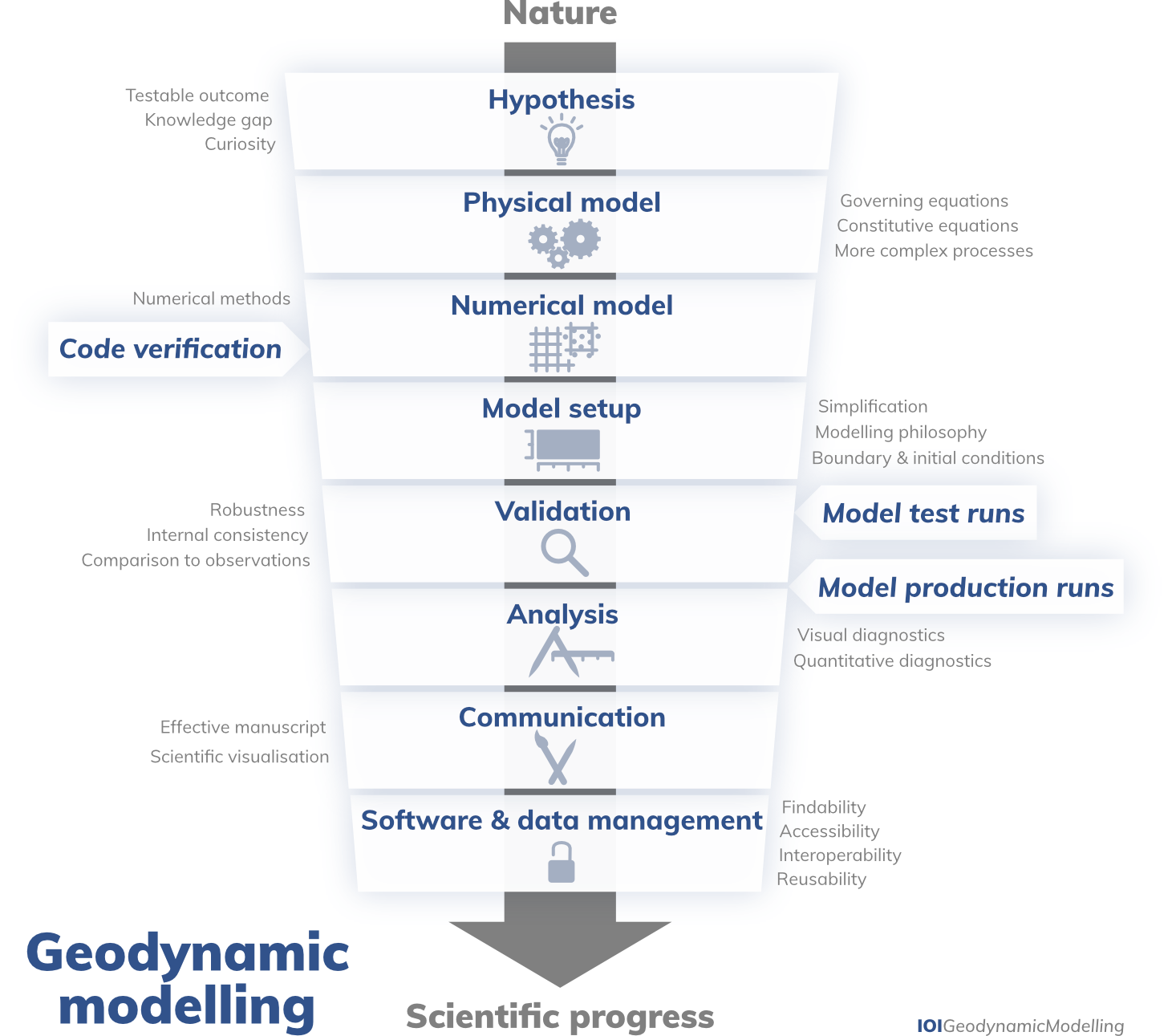
Sediments and style of convergent margins
Subduction zones represent the only major pathway by which continental material (sediments) can be returned to the Earth's mantle. When sediments are considered, convergent margins appear to fall into one of two classes: accretionary and erosive. In this study, we run 2-D subduction simulations to investigate how sediment fluxes influence subduction dynamics and plate coupling.
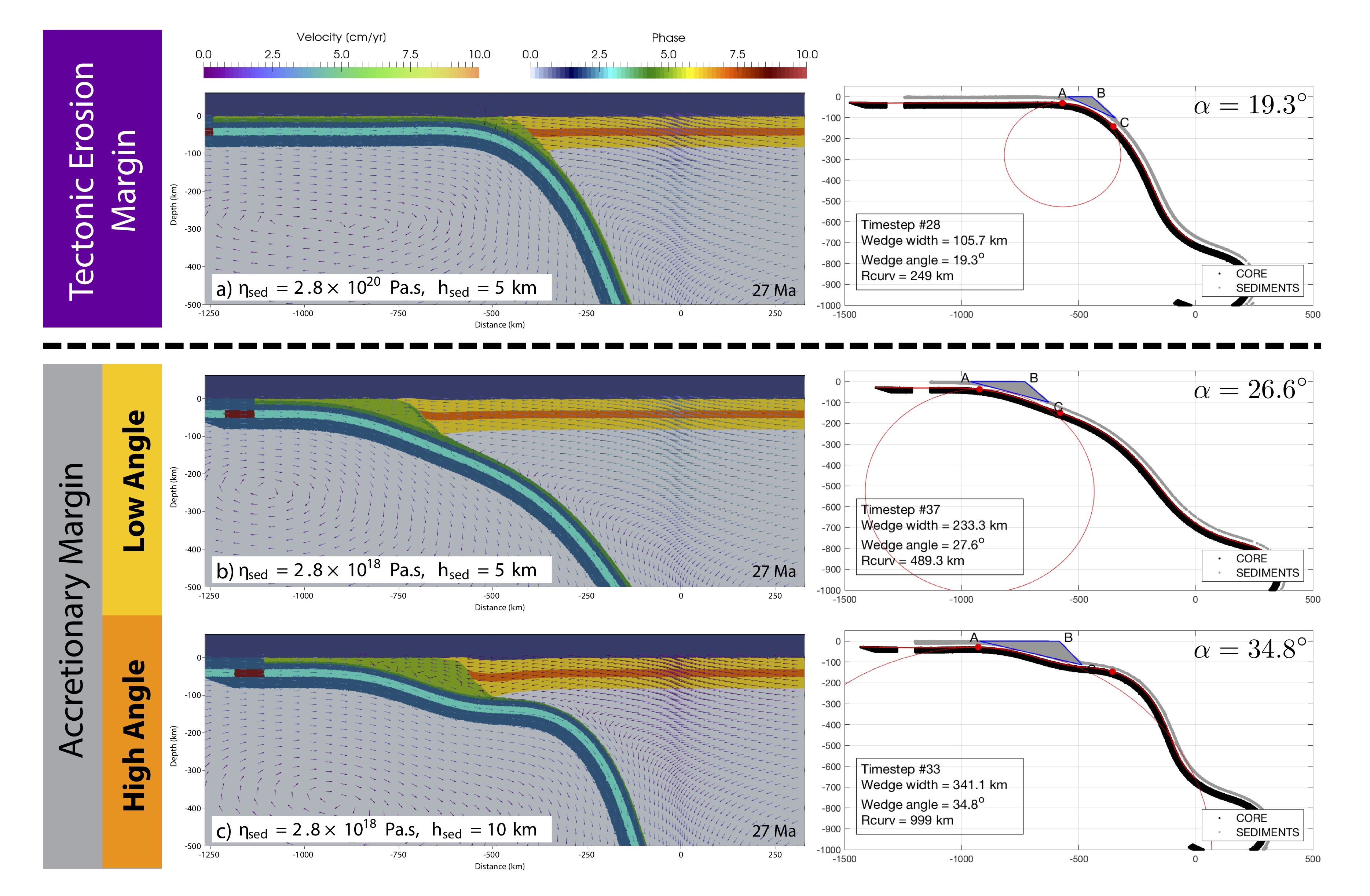
India-Asia convergence history and double subduction
Same-dip double subduction is a special tectonic configuration, where two slabs dip in the same direction. Examples exist for the India-Asia and the present day Ryukyu-Izu-Bonin-Mariana (Pacific, Philippines Sea Plates) settings. We run 2-D and 3-D models to investigate the formation and stability of double subduction, and we propose a new sequence of events for the India-Asia convergence history.
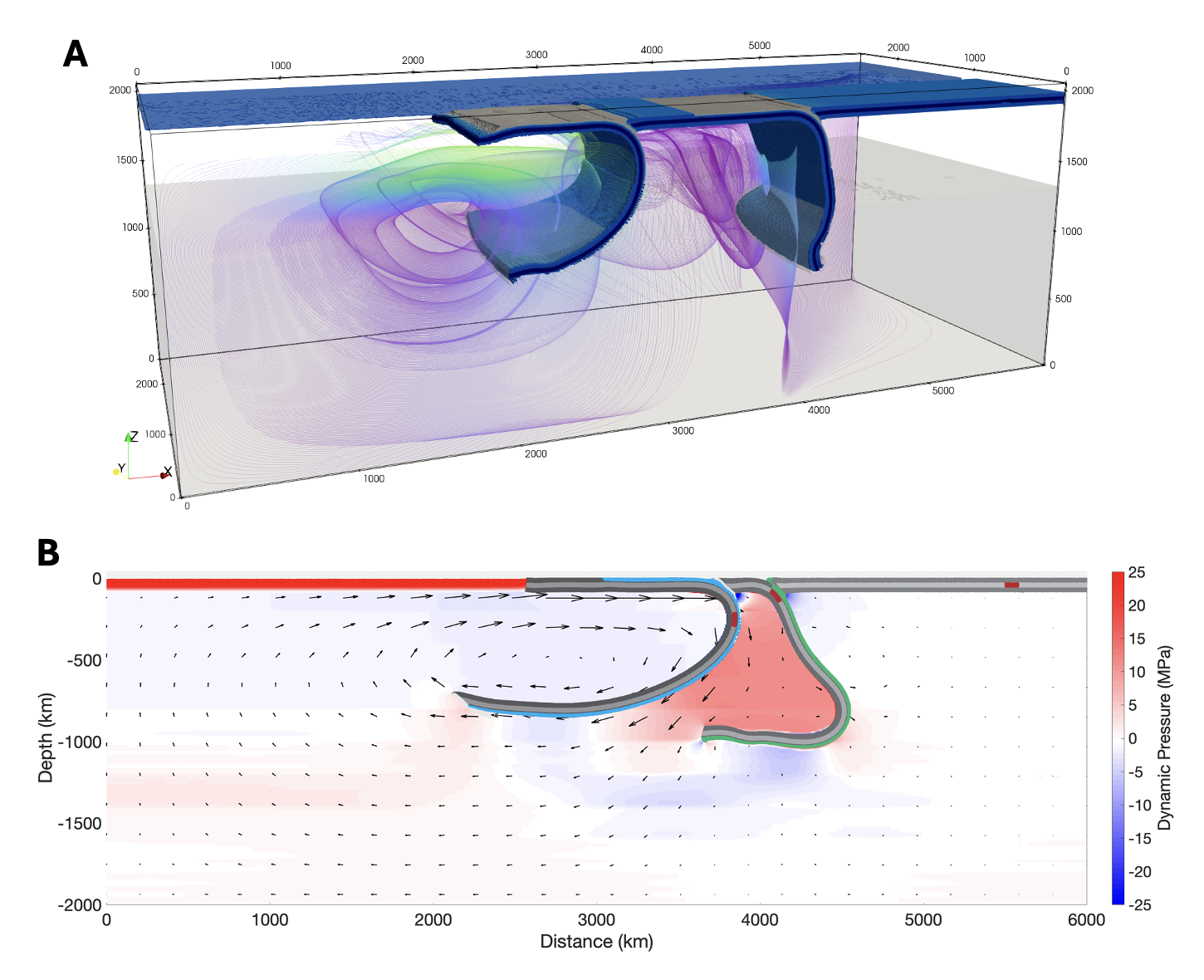
Topography in 3-D continental collision models
The Himalayas, the Tibetan Plateau, or the Andes are remarkable features on the surface of the Earth. However, it is unclear how they formed or why they are so high. In this project, we ran lots of 3-D simulations of subduction/collision to understand how high topography (>5km) is formed. And it turns out it's not so easy to build topography in numerical models. However, we do provide semi-analytical insights on the conditions necessary for building high mountains and plateaus.
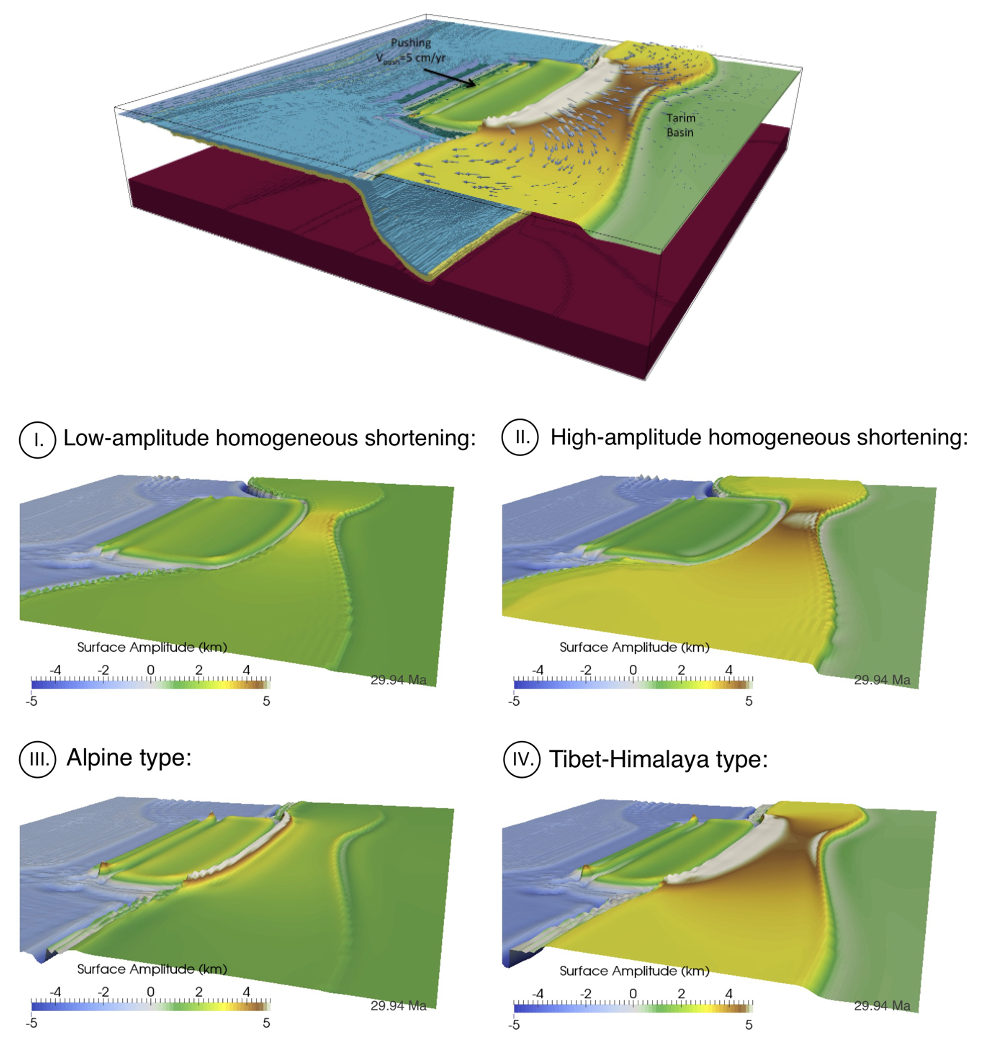
Rheological approximations in 3-D subduction-collision models
Rocks deform in a visco-elasto-plastic manner, which is difficult to solve numerically (nonlinear system) and the coefficients are poorly constrained from observations and laboratory experiments. So, previous numerical studies used various approximations for rock rheology. In this study, we investigate the effect of such rheological approximations in a 3-D subduction/collision model.
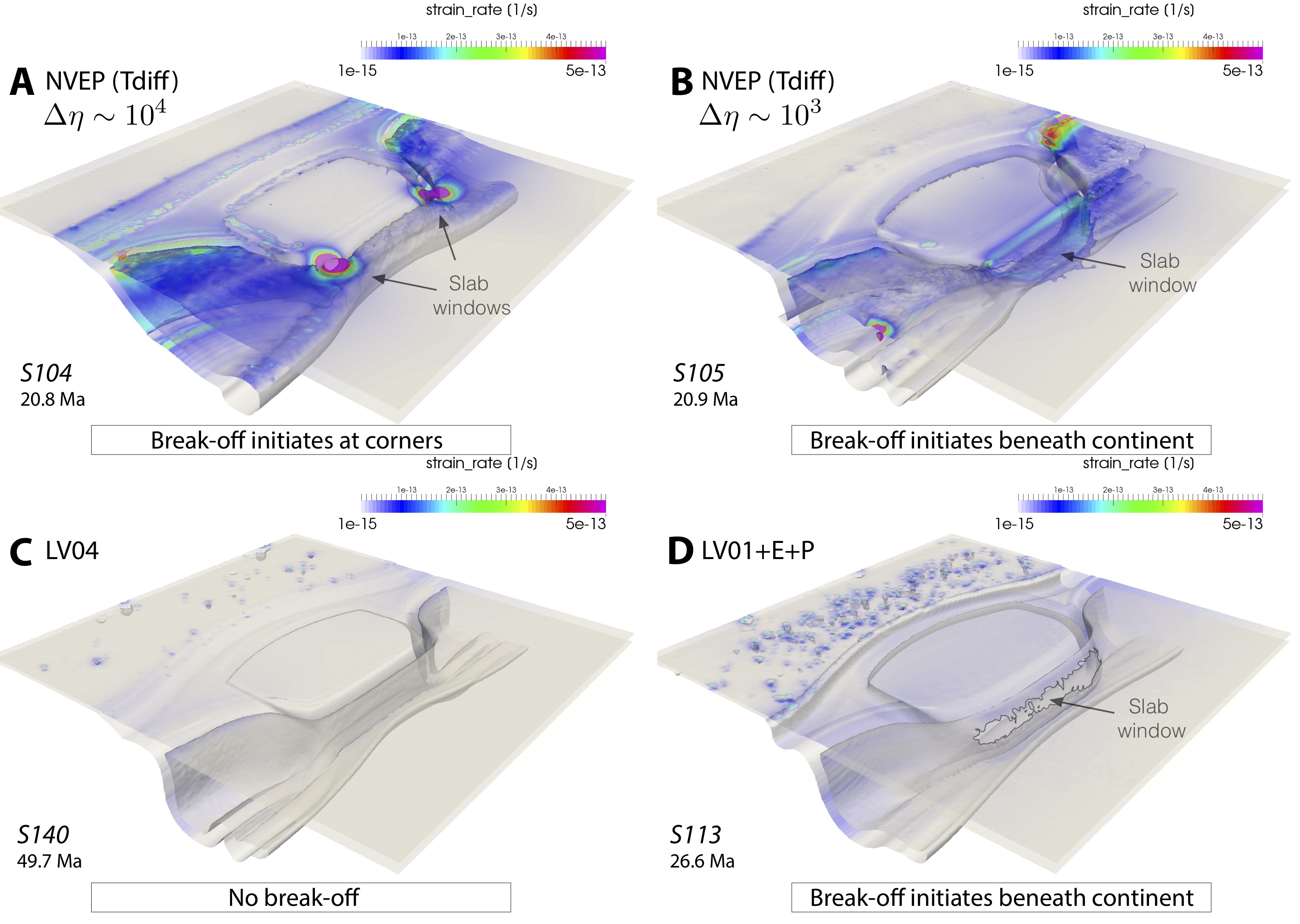
Numerical methods for computational geodynamics
Part of my research involves developing the numerical techniques employed. By knowing and mastering the tools I am using, my work can achieve far better quality, a principle I try to follow and instill in others. Topics: numerical methods for single/two-phase flow theory, finite difference discretisation scheme, non-linear solvers for complex rheology.
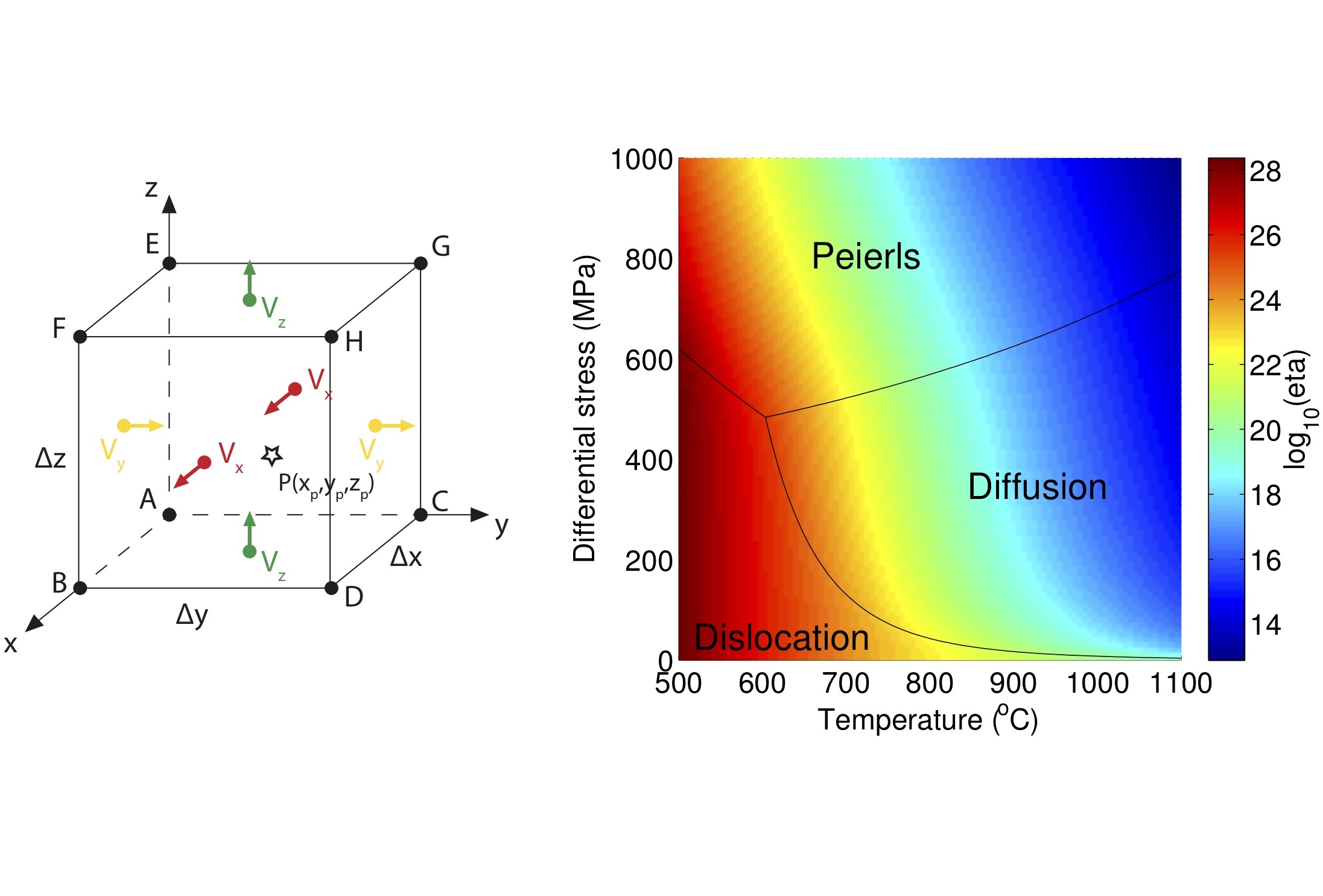
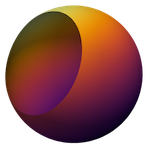 Adina E. Pusok
Adina E. Pusok